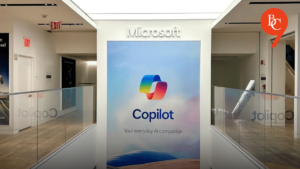Microsoft Enhances Copilot Vision for Windows and Mobile Platforms

Microsoft Expands Copilot Vision for Windows and Mobile
Microsoft has recently enhanced its Copilot Vision feature, broadening its integration to Windows and mobile platforms. Initially introduced as part of a significant redesign last year, Copilot Vision had previously been limited to Edge web pages. The new updates signal a noticeable expansion of its capabilities.
New Features of Copilot Vision
On April 5, 2025, Microsoft announced exciting developments for its Copilot Vision. This update enables the AI assistant to process and analyze real-time video captured through a mobile camera. With this feature, users can receive helpful tips and advanced suggestions for various tasks, simplifying many common activities.
Key Updates:
- Real-Time Video Analysis: The feature allows Copilot Vision to analyze video input from mobile devices, offering relevant guidance to enhance user experience in performing tasks.
- Mobile Integration: The Copilot Vision is now integrated into the Copilot app available for iOS and Android, marking a significant step towards a comprehensive user experience across devices.
Copilot Vision on Windows
In addition to mobile enhancements, Microsoft is also updating the Copilot app for Windows to support Copilot Vision across the entire operating system. As part of this update, users can look forward to several advanced capabilities, including:
- Task Assistance: Copilot can provide real-time guidance and coaching for complex programs, such as Adobe Photoshop, helping users navigate features more effectively.
- Contextual Image and Web Analysis: The AI assistant will be able to examine the photos and web pages that users are currently viewing, providing tailored recommendations and feedback based on the specific content.
Availability and Future Rollout
The Copilot Vision feature will first be made available to Windows Insiders next week. After initial testing and feedback collection, Microsoft plans to roll out the feature more broadly. Microsoft highlights that this assistant now supports a variety of functions, which include but are not limited to:
- Memory Retention: Copilot retains information to help personalize responses.
- Enhanced Personalization: Users can expect responses and suggestions that are tailored to their individual preferences and history.
- Web-Based Actions: The AI can perform actions based on information it gathers from the web, streamlining tasks for its users.
- Content Creation: The assistant can also assist in generating podcasts and conducting deep research, enhancing productivity across various domains.
Related Developments
While the Copilot Vision update is a significant step for Microsoft, it’s worth noting that other tech companies like Meta are also making strides in the AI arena. For example, Meta has plans to build data centers in the U.S. to support its AI growth, indicating a competitive environment in the technology sector focusing on AI advancements.
Impact on Productivity and User Experience
The introduction of features like Copilot Vision indicates a shift towards a more integrated and supportive technological environment. By utilizing advanced AI to assist with everyday tasks, Microsoft aims to enhance user efficiency and the overall digital experience. These enhancements not only improve task performance but also foster a greater understanding of various software features, ultimately benefiting users of all skill levels.
With the impending rollout of Copilot Vision across mobile and desktop platforms, Microsoft is positioning itself as a leader in integrating AI into practical, everyday uses, demonstrating the potential of technology to transform how we interact with digital environments. Users can look forward to a more intuitive, responsive, and efficient experience powered by AI.





